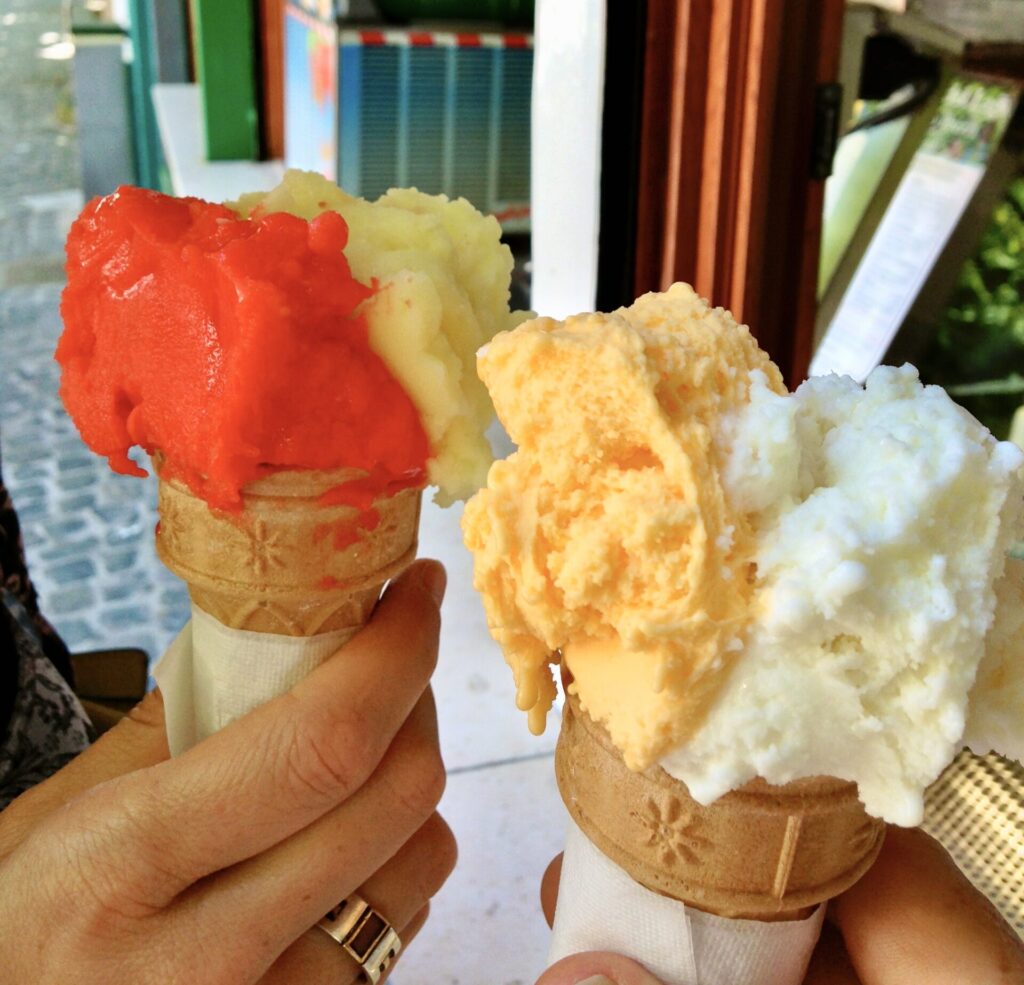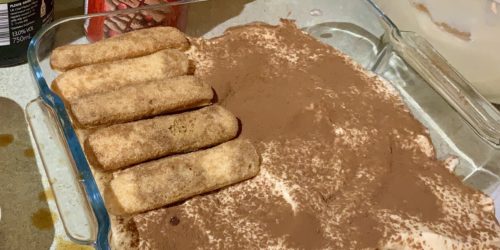Nice ice, baby
Edit 17 September 2024. I was telling Angela about this recipe, which inspired me to update it. I’ve been fiddling with it, you see, and I think I’ve hit on the perfect ratio of egg yolk to sugar to dairy. Try it and let me know what you think. Changes are bolded or struck through.
Gelato is quite the thing, isn’t it? You can get it on every street corner in Italy, but try to make it at home, and the very next day (if stored in the –20 like normal people) it’s hard as, well, ice.
As soon as it comes out of the ice-cream maker it’s magic, but if you have any left and you haven’t got it out to warm up half an hour before you want it (and who is organized enough to do that?) you’re hacking at it with a hammer and chisel.
Rick Stein has a gelato recipe in his ‘Road to Mexico’ book, which I can recommend for many reasons, but the gelato recipe is not one of them. Ask me about the mayonnaise and the Caesar salad—and to be honest, everything else in the book some other time, and I’ll rave about it.
But not the gelato.

However, seeing his recipe and the other attempts I’ve found on the interwebs set me to thinking. And what I thought was, “It’s the eggs, innit?” Now, apparently there’s a bit of a holy war about eggs in gelato. Some people say ‘authentic’ gelato doesn’t have egg, and others are equally dogmatic about it having eggs. As far as I can make out, ‘eggs-in’ is Northern Italy, and ‘eggs-out’ is everywhere else.
As we are just the tiniest bit posh, I agree with the Northerners (the Italian variety), and in my book (and apparently Rick Stein’s too), gelato has egg in it.
It is, after all, frozen custard.
But the thing about eggs, cooked and frozen, is that they’re great thickening agents. So maybe, getting back to where we came in, there’s too much egg in the gelato recipes?
So I made this one up, and not only is it delicious fresh out of the ice-cream maker, it’s just as soft-scoop delicious after spending a night in the garage chest freezer. Which is to say, very.
For a basic vanilla gelato
Combine ~1 pint whole milk with ~20 fl oz double cream in a large saucepan. Essentially take a 600 ml pot of double cream from which you’ve poured ~1/5 for pumpkin pie or other purposes, tip that into a bowl and wash the pot out with blue milk. That’s what I did, and Jenny told me to write this down, so here we are.
Add the beans scraped from one vanilla pod, and either dump the pod itself in or store the pod in 4 oz caster sugar to preserve it (and flavour the sugar for the next time).
Gently warm the cream/milk/vanilla on the hob until it just starts to froth, then turn the heat off, and let it cool for 10–15 minutes.
While it’s heating, you can whisk 6 egg yolks with 10 oz (1 US cup) caster sugar until light and fluffy.
(The knowledgeable among you will realize that this is not quite twice as much milk/cream/sugar per 4 eggs as the Rick Stein recipe calls for.)
When the cream/milk/vanilla has cooled a bit, gradually beat it into the egg/sugar mix (you can take out the vanilla pod if you like. I leave it it). You have to do this gradually so as not to end up with scrambled egg.
Return everything to the pan and warm gently with stirring until it thickens. Don’t let it boil.
Congratulations! You’ve just made custard.
At this point, the recipes will tell you to strain the custard. If you’ve done this right, thought, you won’t have any lumps and can skip the straining. However, you do want to transfer the custard to a bowl, to cover it, and to leave it in the fridge overnight to chill.
Then simply churn in your ice-cream maker ‘according to the manufacturer’s instructions’ (add some vanilla essence if you’re a vanilla freak like us) and enjoy—either immediately or at a later time after storing in the freezer (or both, of course).
You can use this (with or without vanilla) as a base for whatever flavour you like, but it’s difficult to beat ‘plain’ vanilla.
Pavlova
(I’ve deleted the paragraph about the origins of pavlova because it’s really not worth the down-under hassle.)
It won’t have escaped your notice, but the recipe above calls for six egg yolks. So what do you do with the whites, I hear you ask?
When I was thinking about the gelato recipe, it reminded me of how humanly convenient imperial measures are. Nearly every thing scales according to one egg or one unit of something else—pound of flour, cup of sugar, pint of milk, or whatever the base ingredient is. And that leads us into what to do with the whites.
Delia Smith has a superb recipe for pavlova that calls for three egg whites and 6 oz caster sugar. So what I do is scale up to six whites with 10 oz sugar, and cook slower for longer. Cutting back the relative amount of sugar doesn’t seem to hurt, and makes it healthier. (Cough.)
And it’s great. Best served with (yet more) double cream, and raspberries.


